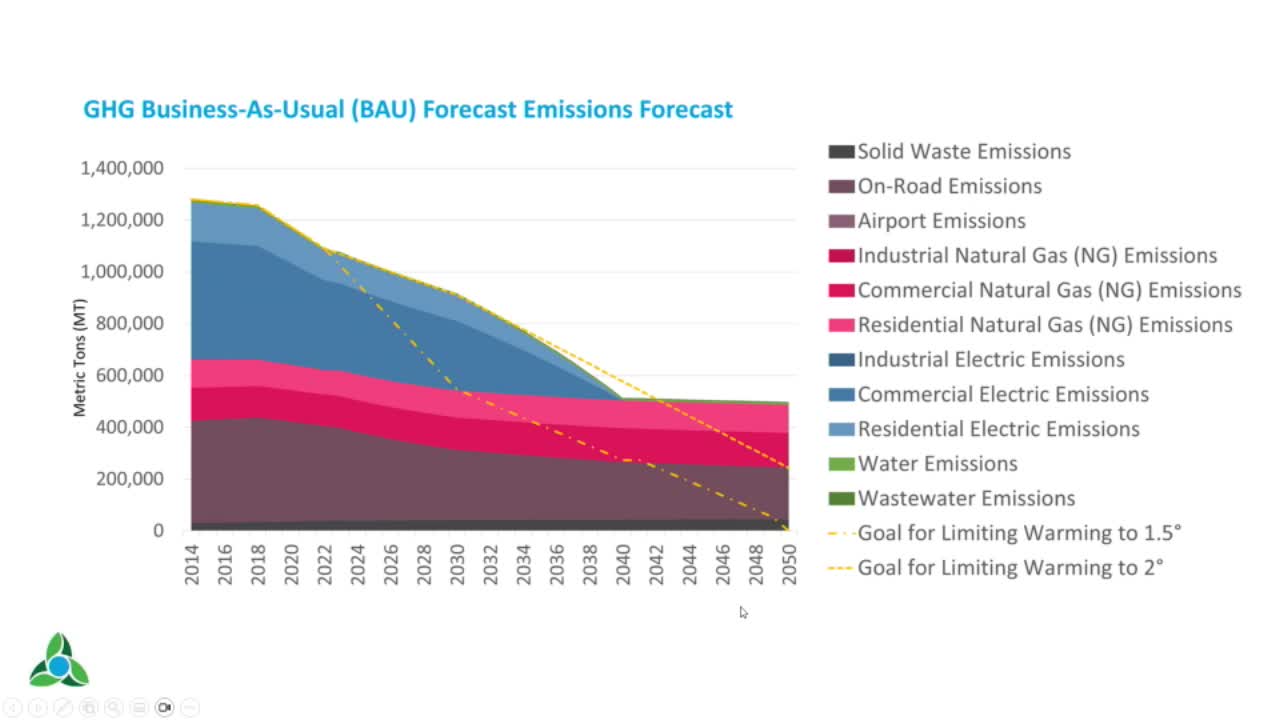Mapping the Future of Climate Action and Renewable Energy
October 08, 2024 | Eagan, Dakota County, Minnesota
This article was created by AI summarizing key points discussed. AI makes mistakes, so for full details and context, please refer to the video of the full meeting. Please report any errors so we can fix them. Report an error »

In a recent government meeting, officials discussed critical studies aimed at addressing climate change and enhancing community sustainability. The discussions highlighted the need for science-based targets to cap global emissions, specifically aiming for a 1.5 degrees Celsius increase, with a secondary target of 2 degrees Celsius.
One significant focus was a comprehensive ground cover and heat island study conducted at a granular level, utilizing satellite imagery to analyze various land characteristics across census tracts. The study mapped tree canopies, grass cover, agricultural areas, and impervious surfaces, distinguishing between light and dark impervious materials. This detailed analysis aims to inform strategies for carbon sequestration and stormwater management, emphasizing the importance of native grasses and the reduction of dark impervious surfaces to mitigate urban heat islands.
The meeting also introduced a renewable energy potential study, which explored various scenarios for increasing renewable energy sources within the community. Utilizing data from the National Renewable Energy Laboratory, officials examined the feasibility of solar energy by assessing the potential for solar installations on rooftops and other renewable sources like wind energy and plasma gasification. The goal is to establish realistic projections for distributed renewable energy and determine the necessary outreach to homes and commercial properties to achieve these targets.
Overall, the discussions underscored a commitment to creating actionable goals linked to the community's environmental characteristics, paving the way for informed decision-making in sustainability efforts.
One significant focus was a comprehensive ground cover and heat island study conducted at a granular level, utilizing satellite imagery to analyze various land characteristics across census tracts. The study mapped tree canopies, grass cover, agricultural areas, and impervious surfaces, distinguishing between light and dark impervious materials. This detailed analysis aims to inform strategies for carbon sequestration and stormwater management, emphasizing the importance of native grasses and the reduction of dark impervious surfaces to mitigate urban heat islands.
The meeting also introduced a renewable energy potential study, which explored various scenarios for increasing renewable energy sources within the community. Utilizing data from the National Renewable Energy Laboratory, officials examined the feasibility of solar energy by assessing the potential for solar installations on rooftops and other renewable sources like wind energy and plasma gasification. The goal is to establish realistic projections for distributed renewable energy and determine the necessary outreach to homes and commercial properties to achieve these targets.
Overall, the discussions underscored a commitment to creating actionable goals linked to the community's environmental characteristics, paving the way for informed decision-making in sustainability efforts.
View full meeting
This article is based on a recent meeting—watch the full video and explore the complete transcript for deeper insights into the discussion.
View full meeting
